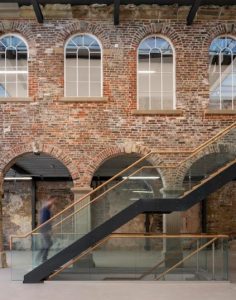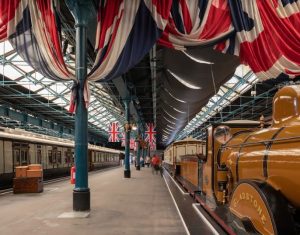Sustainability & historic buildings

Stephen Anderson, Director at Buttress, and Leeds Studio Lead, James Lewis, discuss sustainability in historic buildings
It is broadly agreed that climate change is happening. As architects and specialists in heritage and conservation, we have a real opportunity to influence how our built environment can perform better, regenerate and use less carbon.
We can do this through our designs, by communicating our expertise and normalising the ways we talk about sustainability, and by influencing policy that makes it easier for us all to take steps to a more equitable future.
The built environment is a major contributor to climate change. Although a great deal of focus has been placed on new buildings, we must not overlook the opportunities to improve the sustainability of our cherished heritage assets. This is an important part of the bigger sustainability conversation and one Buttress has actively engaged in within our Manchester and Leeds Studios. For example, how is sustainability factored into the existing decisions for managing change to listed buildings? What is in the architect’s toolkit to reduce the carbon footprint of our significant historic buildings and places and how ready are we all to embrace innovation to ensure that they are sustainable?
Just like new buildings, for historic buildings, there are many moves that we can make to improve the performance of the building fabric that is simple and effective. For example, replacing single glazing with sympathetic double glazing reduces heat loss from a building. Bigger moves might include incorporating passive design measures such as introducing insulation and installing energy-efficient ventilation systems, or even using infra-red heating panels on the ceiling.
Whilst changes to listed buildings require consent this should not deter us from making these consequential and beneficial changes that enhance our historic buildings. The listed building process helps manage change, by considering the balance of a proposal’s ‘harm’ against public benefit; or the ‘positives’ in policy terms. In short, ‘harm’ to historic buildings is an acceptable outcome if that change is demonstrably beneficial for the building’s long-term viable use.

Conservation of our cultural heritage is important as these buildings are a tangible historic representation of our values of society. We know retrofitting them makes them more viable and will help to preserve these values and their historic significance for future generations.
Buttress has extensive experience in retrofitting historic buildings. We’re currently on-site at the National Railway Museum in York, working on the first phase of a multi-million-pound restoration and re-roofing project at the museum’s Grade II listed Station Hall Work starts on first phase of National Railway Museum re-roofing project | Buttress We have also just received planning permission for the transformation of the Grade II Prudential building in Oldham into a new workspace The Prudential | Buttress.
Our concerns are about the many historic buildings that have been neglected. This could be due to financial reasons and might be exacerbated by confusion around policy and the various inconsistent approaches. Sometimes a preservationist and inconsistent approach to change in the historic built environment has consigned heritage assets to obsolescence. Whilst we recognise that the greenest building is the one that already exists, we need to be more proactive in continually improving their performance. We need to normalise the conversations around sustainability and historic buildings and include them in the design process as standard.
Climate change will continue to grow, and we need to change now. The good news is that we can preserve our historic buildings in line with wider performance goals for many years to come.
To find out more about Buttress’ work in the heritage sector see here Understanding Heritage Consultancy | Buttress










